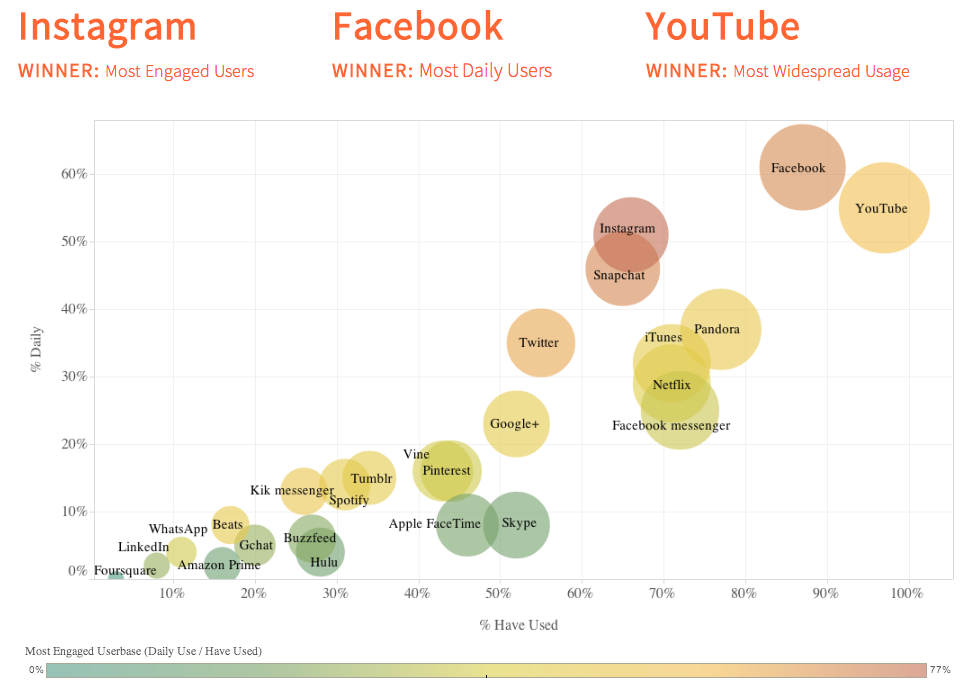Popularity in Social Networks and the Impact of Daily Use
For the past week, we have been learning a lot about popularity in the case of webpages and market products. Notably, we’ve been applying power laws to determine the distribution of popularity among products. Now, while we primarily focused on web pages and market products like books or music, this distribution of property via power laws can also be applied to social networks. In a recent article by The Atlantic, the publication reports how the number one, most popular social network today isn’t Facebook or Twitter, but texting. While some may assume that it isn’t necessarily a social network, the article points out how texting is basically the purest form of social network, and that while it may not be considered one, it is dominant in our social lives, being 3 times more popular then phone calls and being utilized by nearly 87% of high school graduates on a daily basis. In addition, the article displays a graph depicting the results from a poll answered by over 7000 teens and young adults about how often they use certain websites and social networks, and the results show that Instagram had the most engaged users, Facebook had the most daily users, and Youtube that the most widespread usage. The article notes how apps got much more daily usage then websites. In addition, it is interesting to note how has the number of users and the daily usage increases, fewer apps appear.

We have recently learned about power laws in class, and it is clear to see that this rule can apply to social network popularity. The power law is defined in this case as the fraction of social networks that are used by k people is proportional to a/(k^c). As it is shown in the graph, there are much, much more websites and social media apps that are used by only 10% of people then there are websites used by roughly 80 or 90% of people. This makes sense, as websites like Facebook and Youtube are so prevalent in usage that it is difficult for new social networks to become as popular, as they either are forced to compete with the several other networks and websites that also see rather low usage or connect with a much more popular social network like Facebook, creating a case where the “rich get richer”. However, while this graph clearly establishes the concept of the power law existing in social networks as we have learned in class, it is also interesting to apply how daily usage could impact popularity. In this case, it is clear to see that as the daily usage percentage increases, so does the popularity. This is likely because if a person begins using a network or app daily, it will more easily spread the the persons friends and potential increase in popularity as it spreads. This means that it is more likely that daily use would have a greater impact in popularity then the number of people of using the network. Basically, if you see how some of your friends are always on some fancy new network, you’ll be a lot more likely to use it too, increasing its exposure and helping to increase its popularity.
